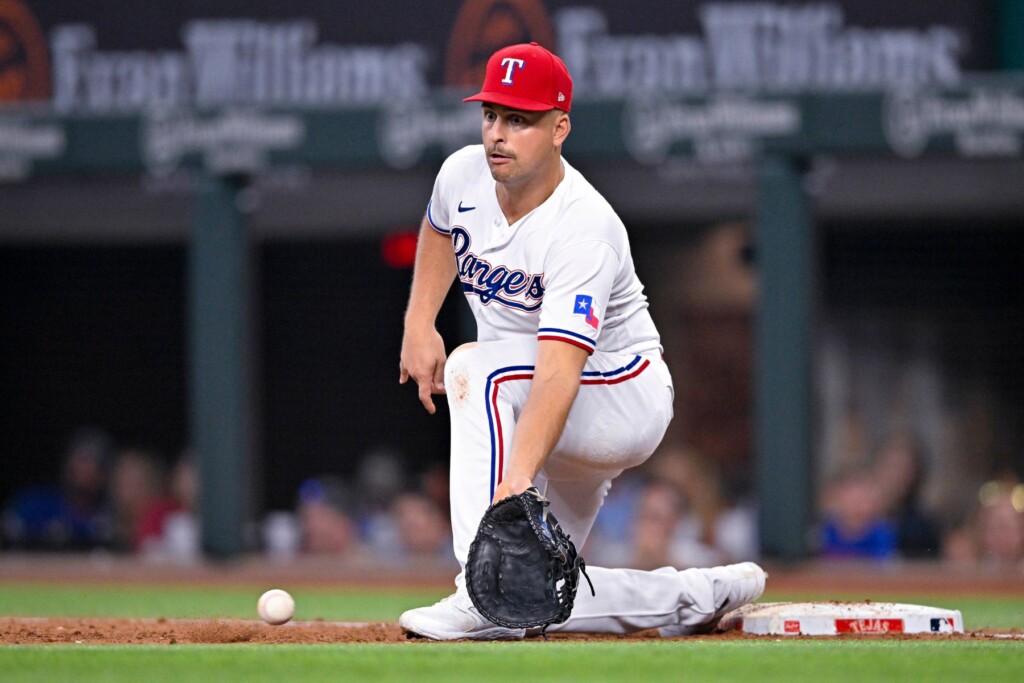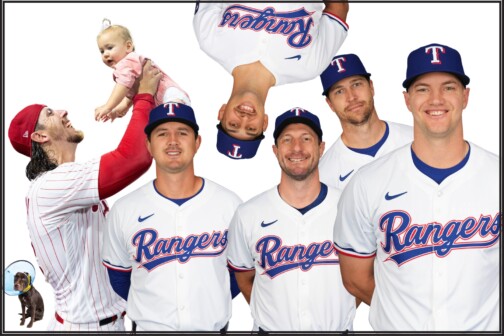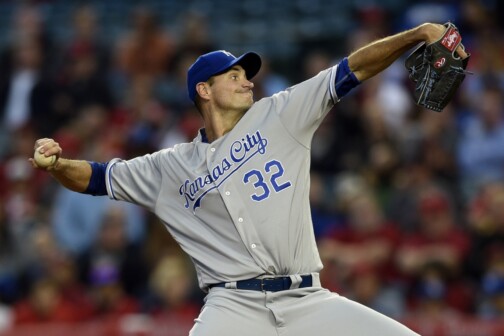The previously surging Rangers are 13-11 in June, which you can chalk up to stranding too many runners and blowing too many late leads. A team with the second-best run differential in baseball won’t waste scoring opportunities forever. And a bullpen this bad won’t improve without an injection of fresh arms. I know this, and you know this, which is why there’s little novelty in writing a bunch of words dwelling on it.
So let’s talk about something else instead.
As a rule, I treat first-base defense with the same reverence as the color of sprinkles on my ice-cream sundae or the style of a luxury sedan’s hood ornament. This is to say, barely any, as long as all is right with the foundational element. And in the case of the men who occupy baseball’s least valuable defensive position, the foundational element continues to boil down to “big bat goes boom.”
So you did not hear me among the chorus concerned with Nathaniel Lowe’s terribad defense during his breakout 2022 campaign, and not only because I remain a charter member of the Nathaniel Lowe Appreciation Society. It was simply because I found it rather silly to fixate on when everyone’s favorite mustachioed photographer hit like the 13th-best player in baseball by FanGraphs’ wRC+, which measures overall offense independent of park factors. Lowe’s 143 mark was tied for fourth among first basemen, alongside burly Mets slugger Pete Alonso. It eclipsed the production of household names like Shohei Ohtani, Carlos Correa, Rafael Devers, and Jose Ramirez. Closer to home, it was the best full-season performance at the plate by a Ranger since Mike Napoli’s gargantuan 2011 season on Texas’ second A.L. pennant-winning team.
Do that, and I can only be moved so much to care about how he tends to his defensive station, never mind that it often was with the grace of an Irish dancer jigging in cinder-block shoes. Forest, trees, and all that.
But a batter producing 43 percent better than league average can get away with a lot more in the field than one doing so only at a 28 percent better clip, the way Lowe is this season. For that matter, a brutal defensive first baseman can get a lot more quarter in an infield without a shaky left side.
It matters quite a bit, then, to see the great Mike Petriello of MLB.com—no, this is not my alter ego—point out that Lowe has quietly pogo-sticked from a bottom-barrel defender at his position to an elite one. It matters for the Rangers in 2023, and it could matter quite a bit more going forward, too.
There are caveats, mind you. Individual defensive value has always been something of a moving target in baseball, and that’s particularly true at first base. Traditionally, no one metric has been widely regarded as best in class for very long. But you don’t need to strain too hard to find some meaning in the current gold standard, MLB Statcast’s Outs Above Average (OAA), rating Lowe second among first basemen at five outs above average one season after his minus-11 mark was baseball’s worst. Just watch him make plays like these more frequently a season after doing things like this.
As Petriello points out, this transformation is less about Lowe suddenly mastering the spectacular so much as doing the basic better and more often. To wit, when MLB.com’s Kennedi Landry spoke with the 27-year-old in spring training, she learned that many of his most impactful improvements were intangible, from working out with Mets shortstop and defensive savant Francisco Lindor in the offseason to answering third-base coach Tony Beasley’s call to attack infield hops rather than waiting for the ball to come to him.
Given the murky statistical waters we’re wading through, that’s a believable synthesis for improvement— sustainable improvement, at that. It lends credence to the idea that this can be more than a small sample shining the Rangers’ way.
That matters plenty in the here and now, on a bona fide contender featuring a third baseman who hovers right around average (Josh Jung’s +2 OAA is 16th out of 40 qualified players at the position) and a shortstop who is decidedly less than that (Corey Seager’s -3 ranks 34th out of 40). Lowe cannot solve for either player’s range, but the better he is, the greater cushion he provides that left side on those throws that snap off a second late or skew a touch high.
It also might provide some cushion for his own future. Lowe has gone from being Texas’ most impressive infielder to its fourth, which has a little to do with him—he’d rival Seager as the most valuable hitter on the team if he paired this year’s Gold Glove-caliber defense with last year’s Silver Slugger-caliber offense—and more to do with everyone else leveling up around him. As of Tuesday, Jung, Seager, and Marcus Semien were all in line to be voted in as All-Star starters; if Jonah Heim, who leads the field at catcher, joins them, Lowe will be the only Ranger on the dirt who won’t be in the starting lineup of the midsummer classic. That status doesn’t make Lowe less valuable in a vacuum—good players are good players—but it does lower his cachet.
That could change the equation for the Rangers down the line, when Seager’s defense figures to nudge him off shortstop. Given that the 29-year-old is flanked by a pair of All-Stars, his next position is a conundrum with no obvious answer. A year ago, when Lowe was delivering awful defense, any reasonable path forward would have wound through his position, either through forcing him to DH or by putting him on the trade block (a suggestion our Jamey Newberg made last year in no small part due to Lowe’s shaky glove). Neither would have maximized the on-field value of high-end bat in his 20s with three more years of team control on the docket—exactly the sort of building block the Rangers should prioritize as the likes of Semien, Seager, and Jacob deGrom inch through their 30s on nine-figure money.
In the end, perhaps that shift still happens and Lowe, the least significant of the bunch, is the one most impacted by the inevitable shifting of the tides across the infield. But his sudden smoothness with the glove no longer makes that preordained. Maybe it staves off a Seager position change entirely, because a bona fide two-way first baseman is worth keeping around for the long haul (and it isn’t as though Seager’s bat won’t play up enough to keep giving the Rangers a serious advantage at short).
These are dilemmas for another day—good ones, at that. The Rangers have well and truly taken a step forward when these are the problems in their infield. And that’s only possible because Nathaniel Lowe solved a very bad problem of his own.
Author







